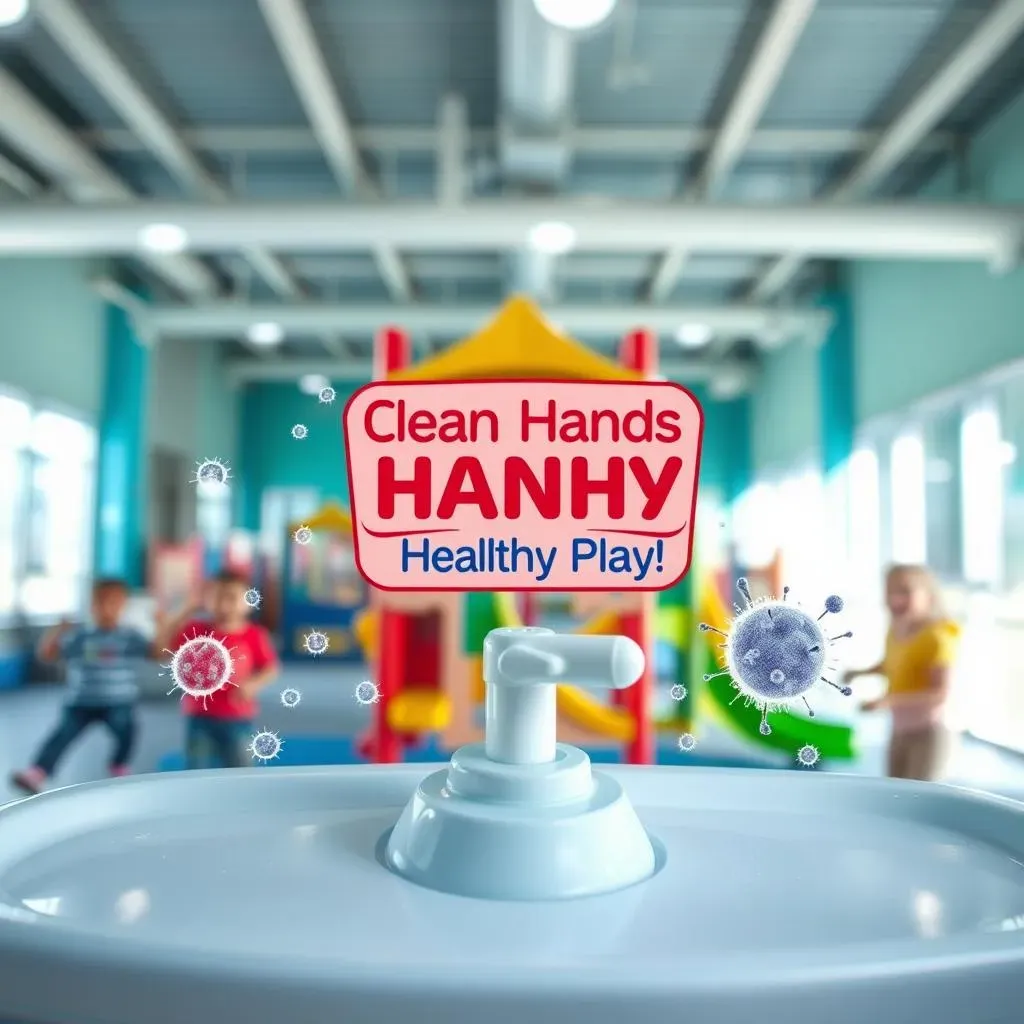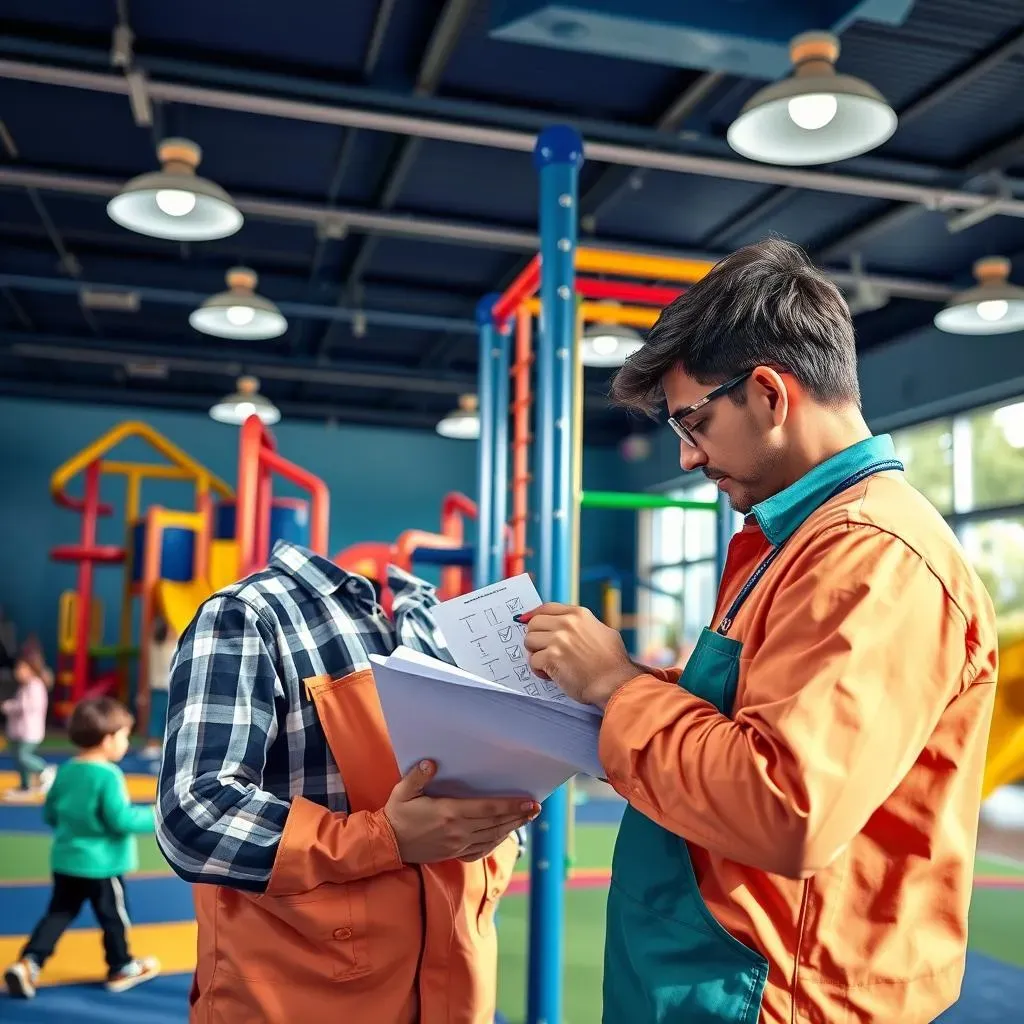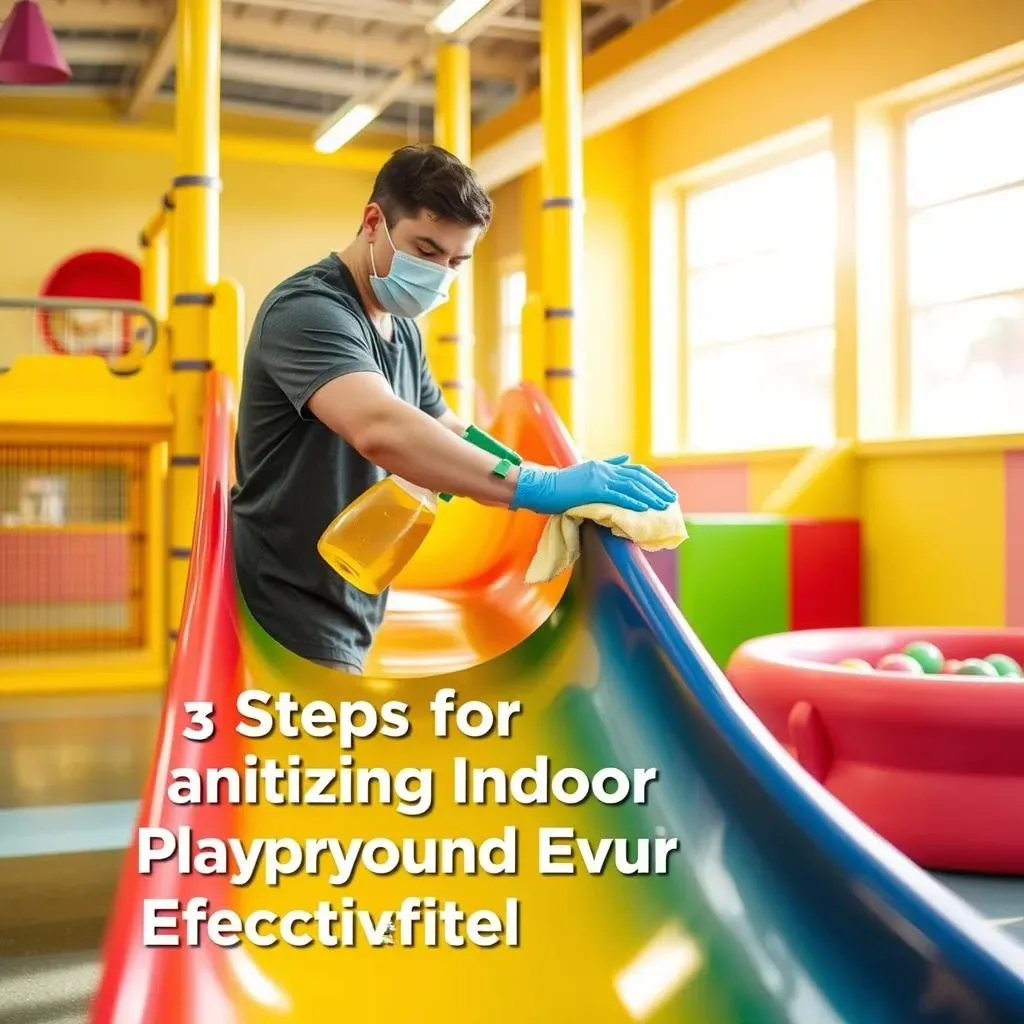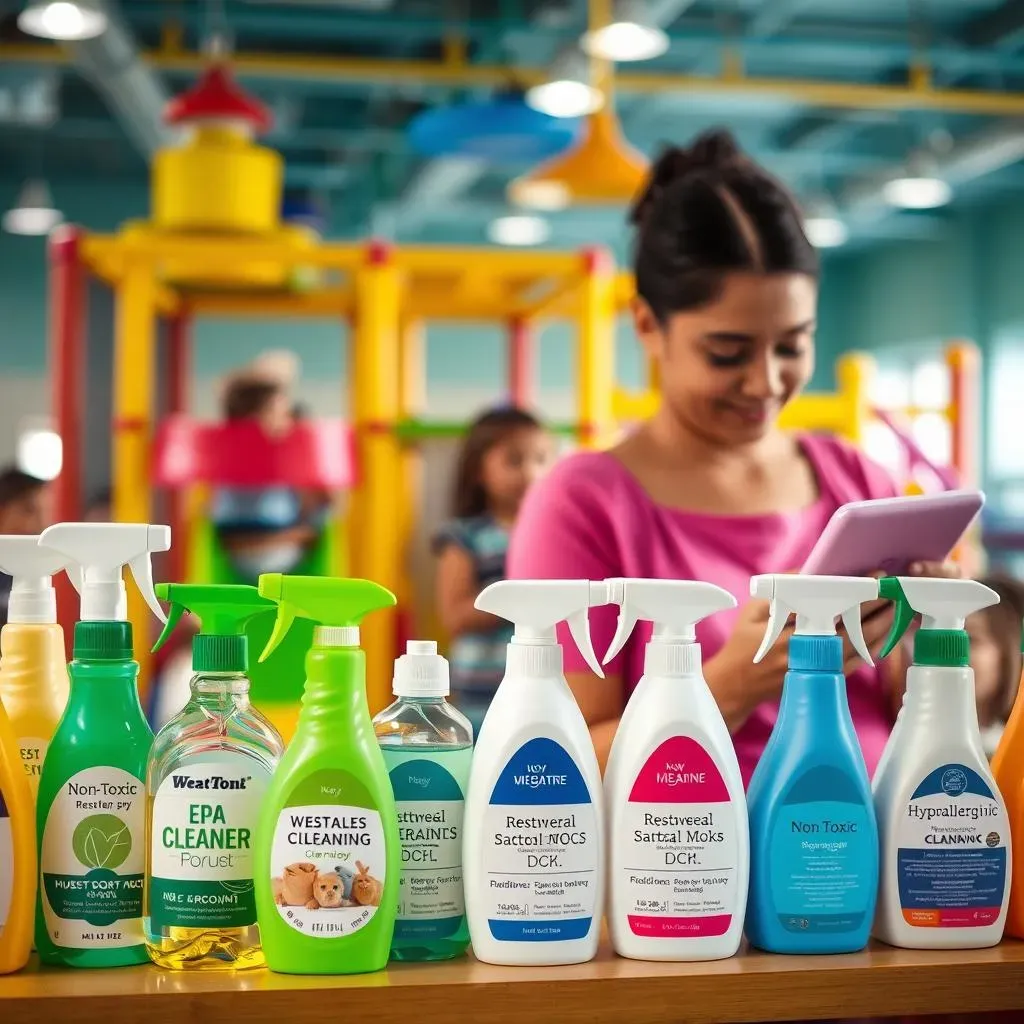Table of Contents
Indoor playgrounds are a blast for kids, offering a safe space to burn energy and explore. But without sunlight's natural disinfecting power, these enclosed environments can become breeding grounds for germs. That's why knowing how to clean indoor playground equipment is crucial for maintaining a healthy and fun environment. Think about it: kids are touching everything, from slides to ball pits, and those surfaces can harbor all sorts of unwanted bacteria and viruses.
Why Cleaning Indoor Playground Equipment Matters

Why Cleaning Indoor Playground Equipment Matters
Let's face it, kids are germ magnets. Indoor playgrounds are like giant petri dishes if you don't stay on top of cleaning. Without the sun's UV rays to naturally disinfect, those germs can thrive on every surface. We're talking about everything from common cold viruses to more serious bugs like norovirus and even the flu. And because kids are, well, kids, they're constantly touching their faces, putting things in their mouths, and spreading those germs around. It's not just about appearances; it's about protecting their health and well-being.
6 Tips for Inspecting Indoor Playgrounds for Cleanliness and Safety

6 Tips for Inspecting Indoor Playgrounds for Cleanliness and Safety
so you're diving into indoor playground inspections? Smart move. Regular inspections are your first line of defense. Think of it like this: you can't clean what you don't see. It's not just about wiping down surfaces; it's about identifying potential hazards and areas where germs love to hide. Here are some tips to get you started:
- Establish a Routine: Don't just inspect sporadically. Set up a schedule, whether it's daily, weekly, or monthly, depending on how busy your playground is. A consistent routine ensures nothing gets overlooked.
- Check for Damage: Look for tears in soft play areas, loose screws on climbing structures, or any signs of wear and tear. Damaged equipment can be a safety hazard and a breeding ground for germs.
- Inspect High-Touch Areas: Focus on areas that kids touch the most, like handrails, slides, and climbing grips. These are the prime spots for germ transfer.
- Look for Hidden Dirt: Check under mats, in corners, and inside tunnels. These are the places that often get missed during regular cleaning.
- Sniff Test: Trust your nose! A musty or unpleasant odor can indicate mold or bacterial growth.
- Document Everything: Keep a log of your inspections, noting any issues you find and the actions you take to resolve them. This helps you track trends and ensure accountability.
Think of it like your car. You wouldn't skip oil changes, right? Regular inspections are the maintenance that keeps your playground running smoothly and safely. A quick daily walk-through can catch small issues before they become big problems. For example, a loose bolt on a climbing frame is a minor fix if caught early, but if left unchecked, it could lead to a bigger repair or even an injury.
5 Steps for Sanitizing Indoor Playground Equipment Effectively

5 Steps for Sanitizing Indoor Playground Equipment Effectively
Alright, so you've inspected your playground and now it's time to get down to the nitty-gritty of sanitization. This isn't just about making things look clean; it's about killing those pesky germs that can make kids sick. Here’s a straightforward, five-step process to effectively sanitize your indoor playground equipment, ensuring a safe and healthy environment for everyone.
- Prep the Area: Before you start spraying and wiping, clear the playground of any loose items like toys or balls. This ensures you can reach every surface and that those items don't get contaminated with cleaning solutions.
- Apply Sanitizing Solution: Use a disinfectant that's specifically designed for use in children's environments. Follow the manufacturer's instructions carefully, paying attention to dwell time (the amount of time the solution needs to stay wet on the surface to effectively kill germs).
- Wipe Down Surfaces: After the dwell time has passed, wipe down all surfaces with a clean cloth. This removes any residue and ensures even coverage. Don't forget to get into those nooks and crannies!
- Air Dry: Allow the surfaces to air dry completely before allowing children to play on the equipment. This ensures the disinfectant has fully done its job and prevents kids from coming into contact with wet chemicals.
- Repeat Regularly: Sanitization isn't a one-time thing. Establish a regular sanitization schedule based on how frequently the playground is used. High-touch areas should be sanitized more often than others.
Think of it like brushing your teeth: you wouldn't just do it once a year, right? Regular sanitization is crucial for maintaining a healthy play environment. For example, a ball pit, with all those balls crammed together, can be a breeding ground for bacteria. Regular sanitization, and even occasional ball washing, is a must!
Choosing the Right Cleaning Products for Indoor Playgrounds

Choosing the Right Cleaning Products for Indoor Playgrounds
The Non-Negotiables: Safety and Efficacy
so you're staring down the cleaning aisle, ready to stock up on supplies. But hold up! Choosing the right cleaning products for indoor playgrounds isn't as simple as grabbing the cheapest option. You've got to think about safety first. We're talking about kids here, so harsh chemicals are a big no-no. Look for products that are specifically designed for use in children's environments. These will typically be non-toxic, hypoallergenic, and free of harsh fumes. Also, efficacy is key. The product needs to actually kill germs, not just smell nice. Check the label for EPA registration and look for claims about killing common playground pathogens.
It's a bit of a balancing act, right? You want something that's tough on germs but gentle on kids. Think about it like this: you wouldn't use bleach to wash a baby's face, would you? The same principle applies here. Read the labels carefully, do your research, and don't be afraid to ask for recommendations from other playground operators. Remember, a little extra effort in choosing the right products can make a big difference in keeping kids safe and healthy.
Cleaning Product Feature | Why It Matters |
|---|---|
Non-Toxic | Avoids harmful exposure to children |
EPA Registered | Guarantees effectiveness against germs |
Hypoallergenic | Reduces the risk of allergic reactions |
No Harsh Fumes | Ensures a safe and pleasant cleaning experience |
Decoding the Labels: What to Look For
Alright, so you've narrowed down your options to a few kid-friendly cleaning products. Now it's time to become a label-reading expert. Pay close attention to the active ingredients. Look for disinfectants that contain ingredients like hydrogen peroxide, citric acid, or thymol (a natural disinfectant derived from thyme oil). These are generally considered safer alternatives to harsh chemicals like bleach or quaternary ammonium compounds. Also, check the concentration of the active ingredient. A higher concentration doesn't always mean a better product. In fact, it can increase the risk of irritation or allergic reactions. Follow the manufacturer's instructions carefully and dilute the product as needed.
Don't just rely on marketing claims. Look for independent certifications, such as Green Seal or EcoLogo. These certifications indicate that the product has been tested and verified to meet certain environmental and safety standards. And finally, consider the type of surface you'll be cleaning. Some products are better suited for hard surfaces, while others are designed for soft surfaces like carpets or upholstery. Choosing the right cleaning products for indoor playgrounds means matching the product to the surface for optimal cleaning and disinfection.
Creating a Cleaning Schedule for Your Indoor Playground Equipment

Creating a Cleaning Schedule for Your Indoor Playground Equipment
Why a Schedule Matters
so you've got your cleaning products sorted, but now you need a game plan. Creating a cleaning schedule for your indoor playground equipment is the key to staying on top of things. Think of it like this: you wouldn't just randomly decide to do laundry, right? You'd have a set day or time. The same goes for cleaning your playground. A well-defined schedule ensures that nothing gets missed and that cleaning becomes a habit, not a chore. It also helps you allocate resources effectively and track your progress.
But where do you start? First, assess how heavily your playground is used. A busy playground will need more frequent cleaning than a less popular one. Consider the age of the children who use the playground. Younger kids tend to be messier and more prone to putting things in their mouths, so you might need to up your cleaning game. And finally, think about seasonal factors. During cold and flu season, you'll want to sanitize more often to prevent the spread of germs.
Factor | Impact on Cleaning Schedule |
|---|---|
Playground Usage | Higher usage = more frequent cleaning |
Age of Children | Younger children = more intense cleaning |
Season | Cold/Flu Season = increased sanitization |
Building Your Perfect Schedule
Now that you've considered those factors, it's time to create your cleaning schedule. Start by dividing your cleaning tasks into daily, weekly, and monthly categories. Daily tasks might include wiping down high-touch surfaces like handrails and slides. Weekly tasks could involve a more thorough cleaning of all play equipment and floors. And monthly tasks might include deep cleaning carpets or upholstery and inspecting equipment for damage.
Be realistic about what you can accomplish. Don't try to cram too much into one day or week. It's better to have a manageable schedule that you can stick to than an overly ambitious one that you quickly abandon. Also, involve your staff in the cleaning process. Assign specific tasks to different employees and provide them with the necessary training and supplies. And finally, don't be afraid to adjust your schedule as needed. If you find that certain tasks are taking longer than expected or that certain areas are getting dirtier faster, tweak your schedule accordingly.
Conclusion: Keeping the Fun Clean
Maintaining a clean and safe indoor playground is an ongoing effort, but it's an investment in the health and well-being of the children who play there. By implementing a consistent inspection and sanitization schedule, choosing the right cleaning products, and promoting good hygiene practices, you can create a play environment that's both fun and germ-free. Remember, a clean playground is a happy playground, so make cleaning a priority and let the good times roll!